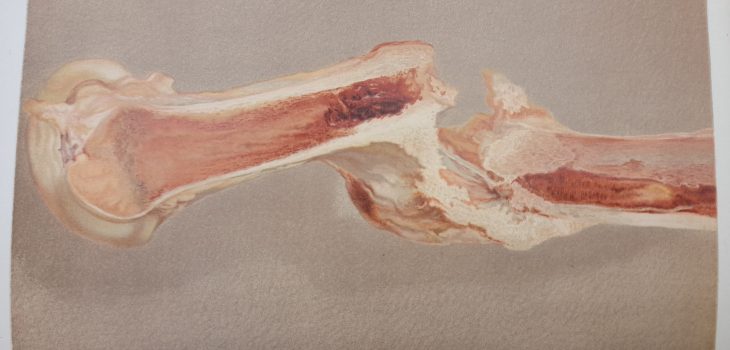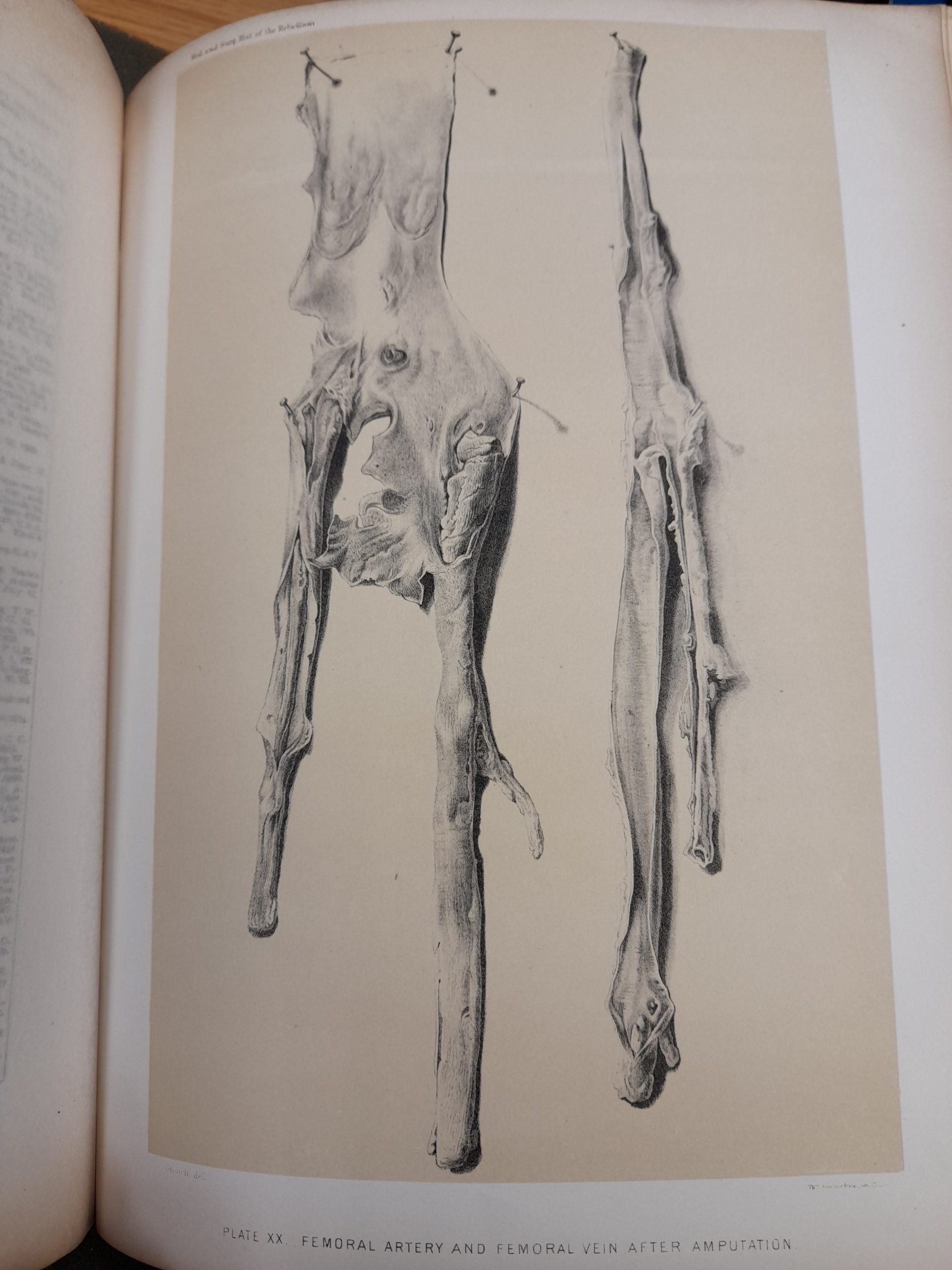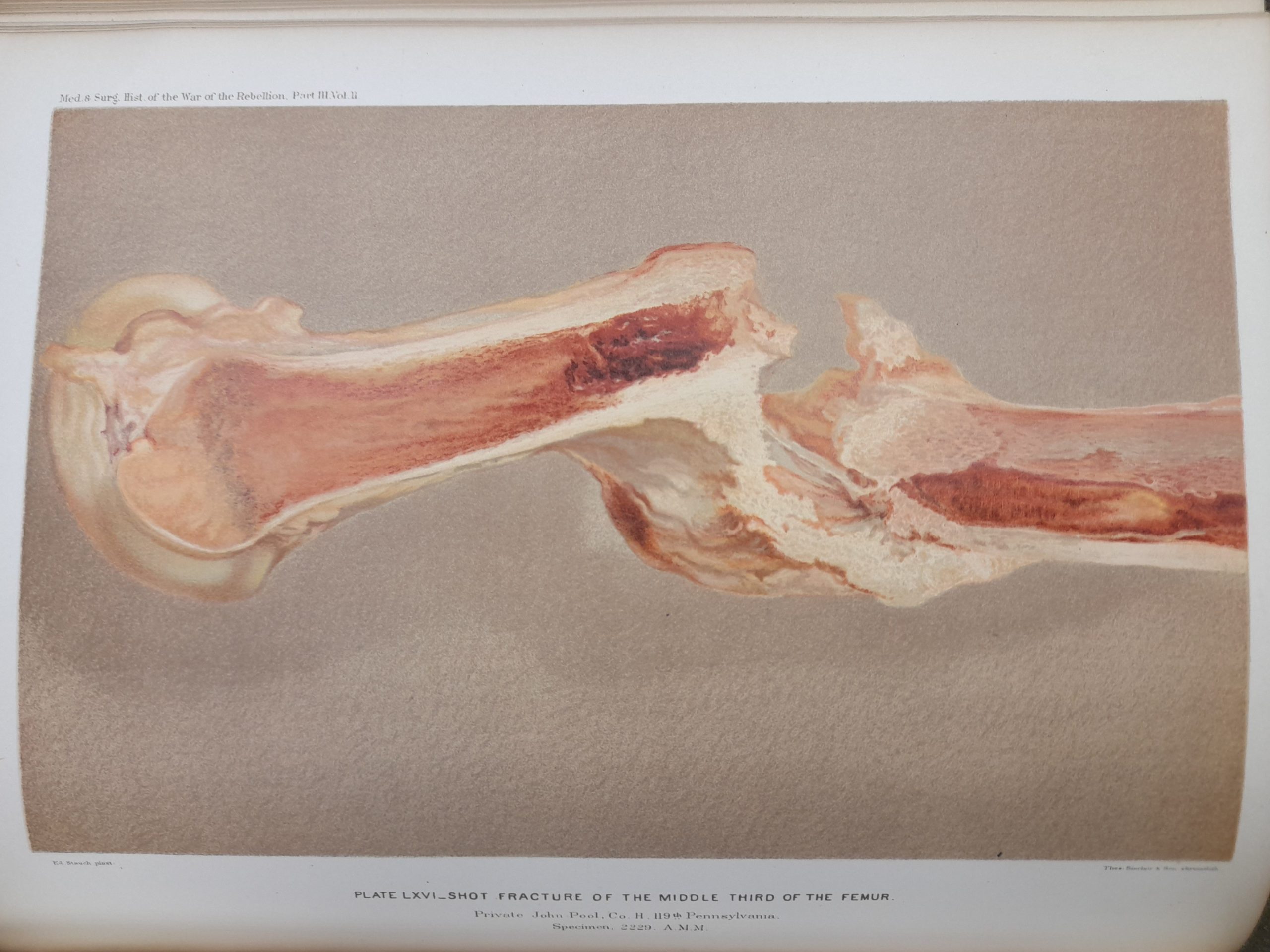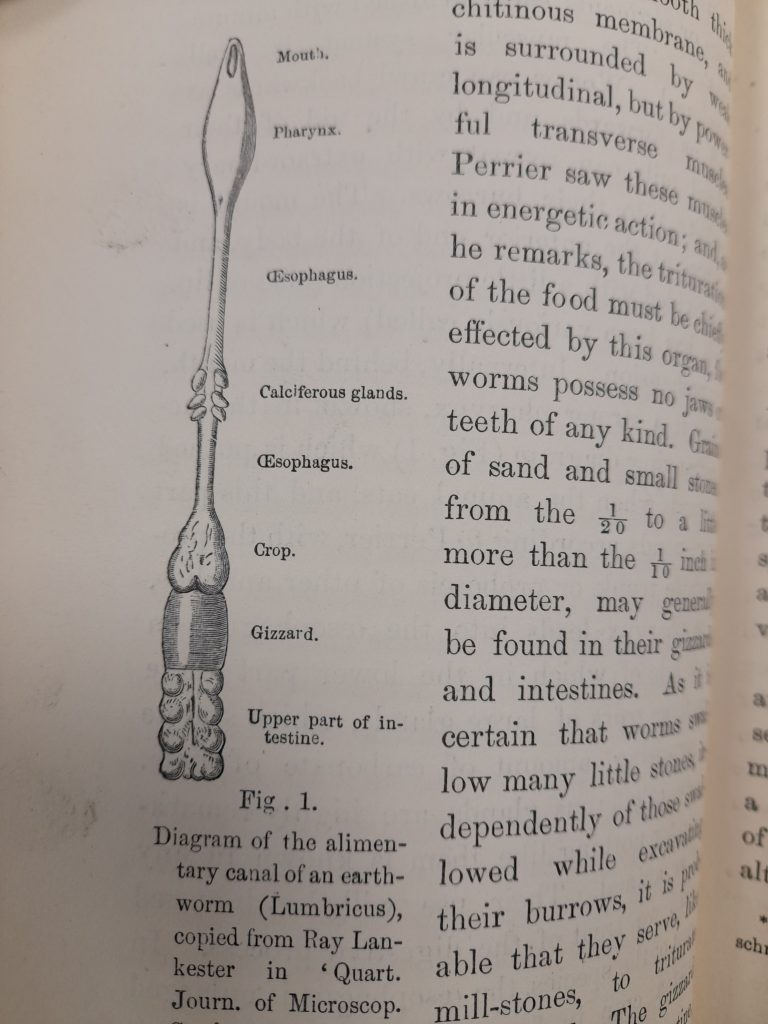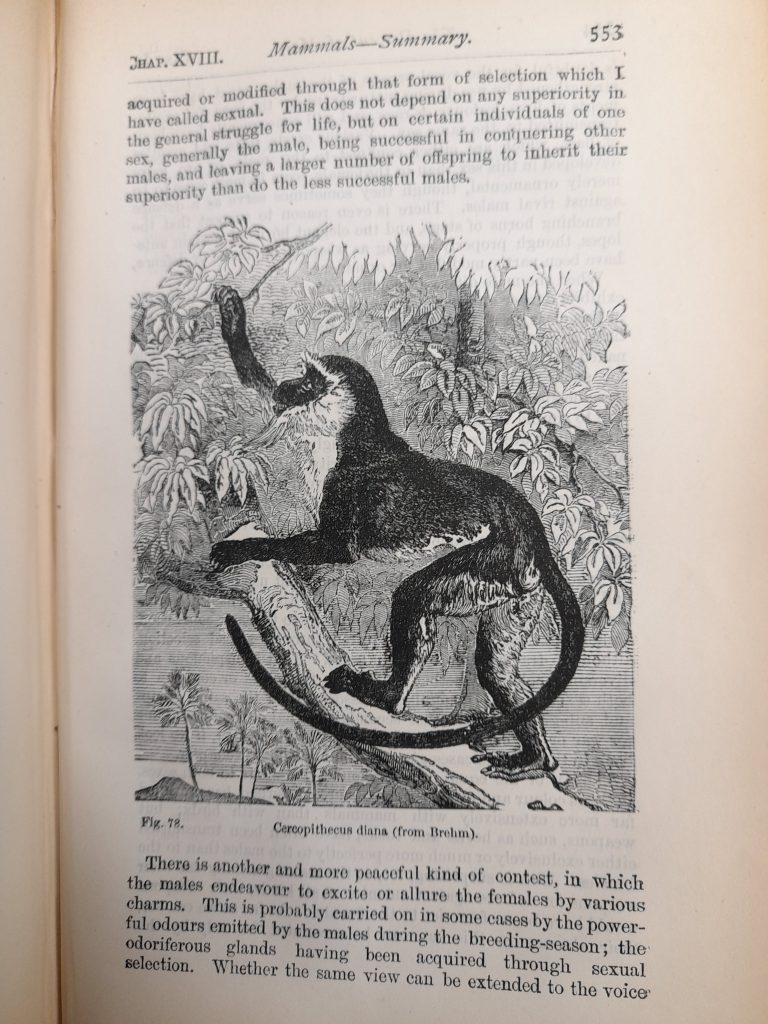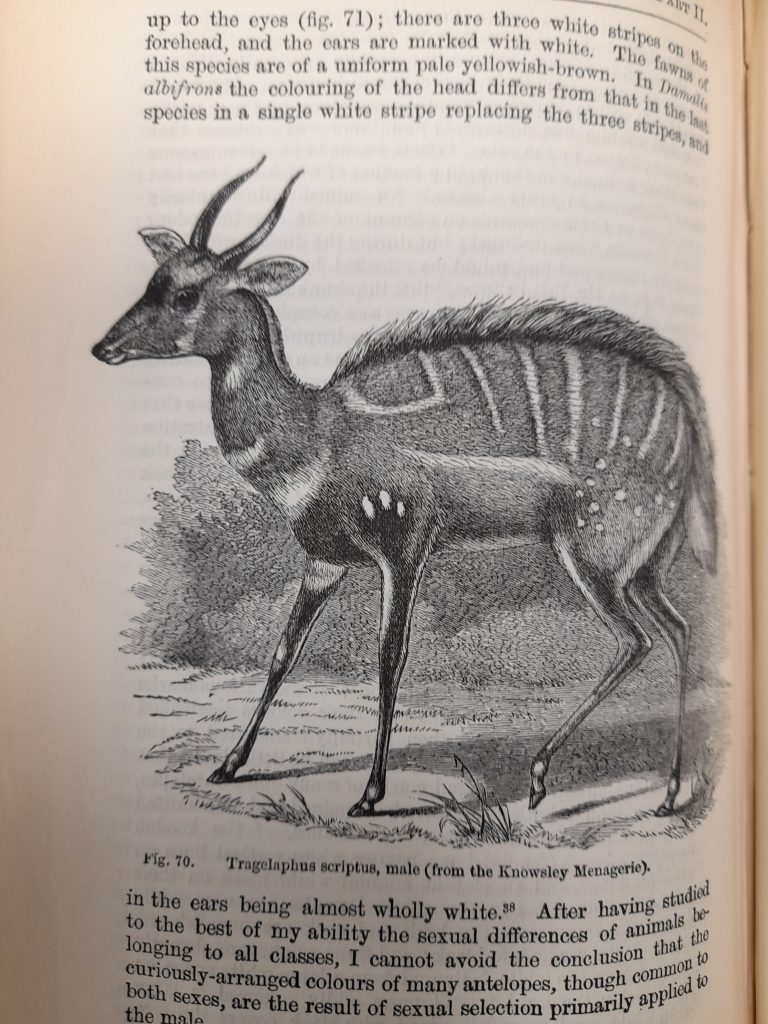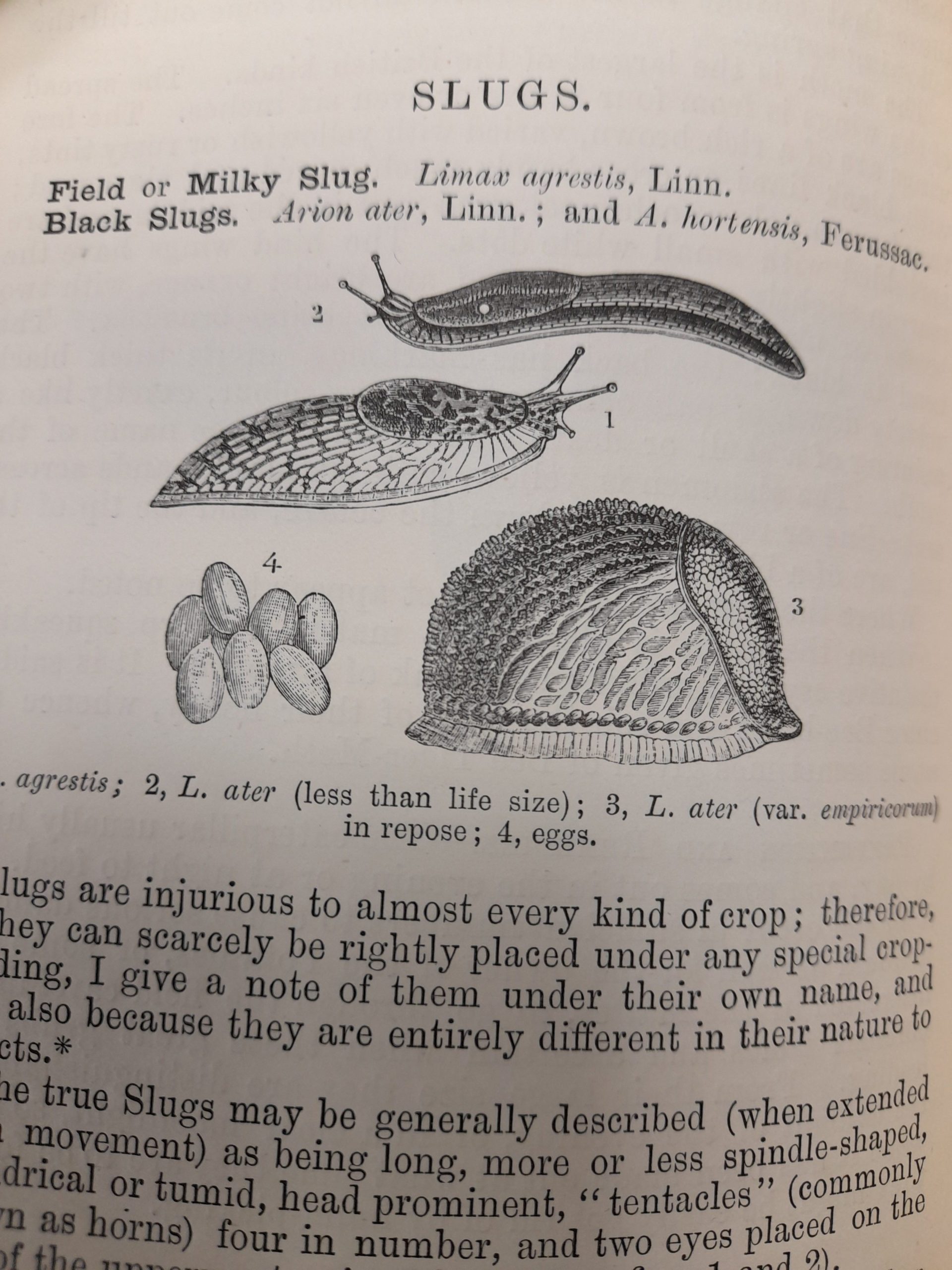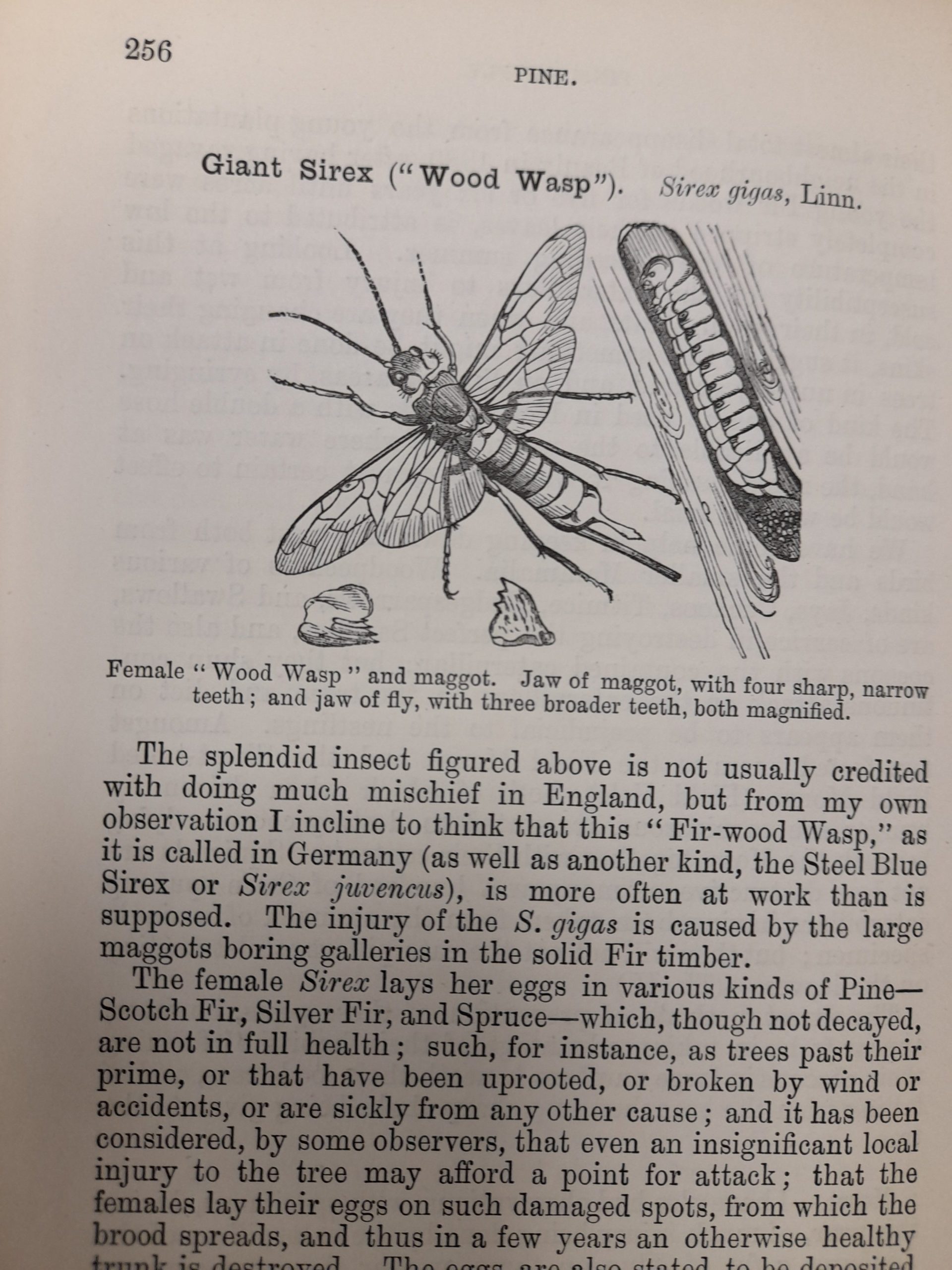The library at LSHTM holds a variety of material in its historical collections, much of it dating from the 19th century before the School was founded. Read on for some highlights from among this material.
Bones and bodies
One of the more graphic texts the library holds is the ‘Medical and Surgical History of the War of the Rebellion’ by the Surgeon General’s Office. This series contains several volumes, with each volume providing detailed illustrations of illness and injuries common among soldiers in the 19th century. The surgical volume is particularly elaborate, with a wide variety of detailed illustration, many of them full colour.
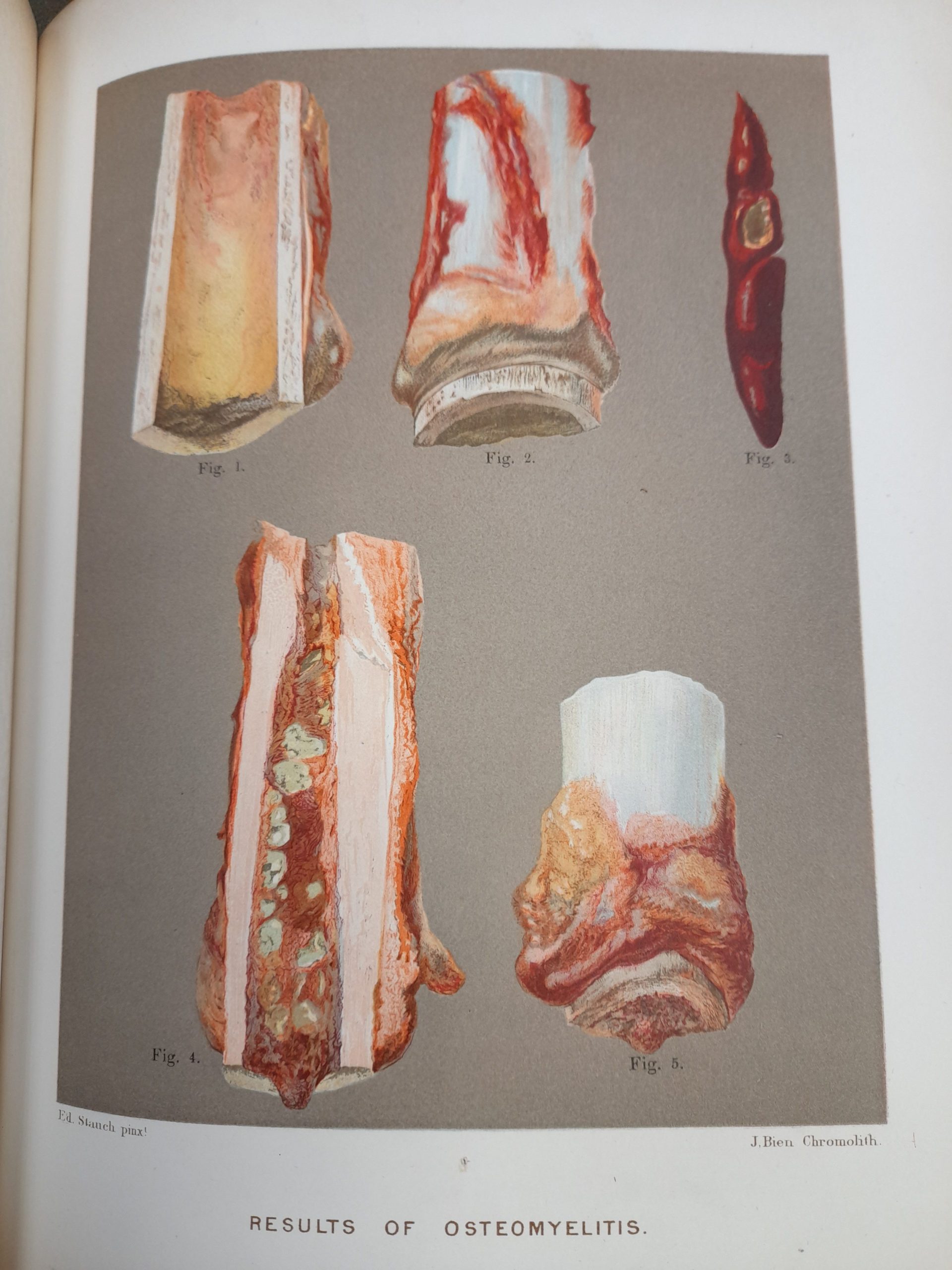
Darwin’s writings
The collection also holds several books by Charles Darwin, among them the well-known ‘On the Origin of Species’ and ‘The Descent of Man’, and the less commonly discussed ‘Vegetable Mould and Earthworms’. In this book, Darwin documents his attempts to investigate the role that earthworms play in the development of the ‘vegetable mould’ layer in soil. His experiments on the worms included having his son play the bassoon to them, as well leaving pieces of vegetable out for them in order to investigate whether the worms would interact with them. (As it turned out, the worms were highly sensitive to the vibrations produced by the bassoon).
Sadly, the text lacks any lifelike illustrations of the earthworms themselves, and only contains one earthworm diagram, which shows the arrangement of their alimentary canal. However, Darwin’s ‘The Descent of Man’, which is also held in the library’s historical collections, contains plenty of more detailed illustrations of a huge variety of flora and fauna.
Injurious Insects
Darwin’s writings may lack earthworm illustrations, but the rest of the collection offers plenty of invertebrate-related material. The ‘Manual of Injurious Insects and Methods of Prevention’, by Eleanor Ormerod, for instance, contains a comprehensive index of the most common types of pests that affect a variety of crops. Each pest has its own section, organised by the type of crop it poses a risk to, and the sections are illustrated by a line drawing of the organism in question.
Hopefully this post has given you a small taste of the huge variety of weird and wonderful material the library holds. Of course, this is only a tiny selection of the material, and there is a huge amount more to explore in both the historical and modern library collections.
Let us know your favourite text from our collections!



